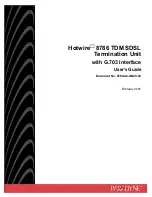
20kΩ
10Ω
200kΩ
100Ω
2MΩ
1kΩ
200MΩ
±[5%(rdg –10 )+ 30]
100kΩ
Open voltage: less than 3V
Overload protection: 250V DC or AC peak value
NOTE: a
:
At 200Ω range, it should make the test leads short to measure the
wire resistance, then, subtracts from the real measurement.
b
:
At 200 MΩ range, make the test leads short, LCD displays 1.0MΩ, it’s
normal and has no effect on the accuracy and should be subtracted from
real measurement.
2-2-6. CAPACITANCE
RANGE
ACCURACY
RESOLUTION
200uF
±(5.0%+10)
100nF
Overload protection: 36V DC or AC peak value
2-2-7. DIODE AND CONTINUITY TEST
RANGE
DISPLAYING VALUE
TEST CONDITION
Forward voltage drop
of diode
Forward DCA is approx.
1mA
,
backward voltage is
approx. 3V
If the resistance
is less than 70Ω±20Ω,
buzzer sounds
Open voltage is approx. 3V
Overload protection: 250V DC or AC peak value.
Warning: do not input voltage at this range!
2-2-8. TRANSISTOR h
FE DATA TEST
RANGE
DISPLAYING RANGE
TESTING CONDITION
hFE NPN or PNP
0 ~ 1000
Basic current is approx.
10uA
,
Vce is
approx. 3V
2-2-9. Live wire identifying
RANGE
DISPLAYING
ALARM
TEST
CONDITION
TEST
000 or 1
Sound, light
AC standard live
wire verify
Overload protection: 500V DC or AC peak value.
Warning: for your safety, please operate according to the safety rule.
4. OPERATION
4-1
.
PANEL DESCRIPTION
1
.
LCD: display the measuring value and unit.
2-1
.
POWER switch: turn on/off the power.
2-2
.
B/L key: turn on/off back light, will be auto off after 2 sec.
2-3: Transistor test jack.
2-4
.
HOLD key: press it, the present value is held on LCD and “ HOLD ”
symbol displays. Press it again, “ HOLD ” symbol disappears, and the meter
exists the hold mode.
2-5
.
Live wire verify light
3
.
Range knob: to select measuring function and range.
4
.
VOLTAGE, RESISTANCE AND FREQUENCY COM
5
.
GND, ANODE SOCKET OF TEST ACCESSORY
6
.
LESS THAN 200mA CURRENT COM, CATHODE SOCKET OF TEST
ACCESSORY
7
.
20A CURRENT COM
SEE THE FIG:
4-2
.
DCV MEASUREMENT
1
.
Apply the black test lead to “COM” terminal and the red one to V/Ω/Hz
terminal.
2
.
Set the knob to a
proper DCV range, connect the black test lead crossly to the circuit under
tested, the voltage and polarity of the point which the red lead connect to
will display on LCD.
NOTE:
1
.
If the voltage range is unknown beforehand, set the knob to the highest
range, then, select a proper range according to the displaying value.
2
.
There is a remained value at small voltage range before measuring, it is
normal and have no effect on measurement. If MSD displays “1”, it means
over range, should set the knob to a higher range.
3
.
Do not input a voltage over 1000V, or, the circuit might be damaged.
4
.
Be careful when measuring high voltage circuit.
4-3
.
ACV MEASUREMENT
1
.
Apply the black test lead to “COM” terminal and the red one to V/Ω/Hz
terminal.
2
.
Set the knob to proper ACV range, connect the test leads crossly to the
circuit under tested.
NOTE:
1
.
If the voltage under tested is unknown beforehand, set the knob to the
highest range, then, select a proper range according to the displaying value.
2
.
There is a remained value at small voltage range before measuring, it is
normal and have no effect on measurement. If MSD displays “1” , it means
over range, should set the knob to a higher range.
3
.
Do not input voltage over 750Vrms
,
or, the circuit might be damaged.
4
.
Be careful when measuring high volt circuit.
4-4
.
DCA MEASUREMENT






















